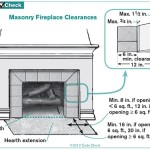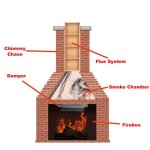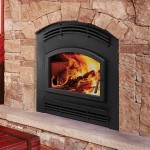Firewood for Inside Fireplace: A Guide to Selecting and Preparing the Right Fuel
Fireplaces are a cherished feature in many homes, offering warmth, ambiance, and a sense of cozy comfort. But to enjoy a crackling fire, you need the right fuel: firewood. Choosing and preparing firewood for an indoor fireplace is crucial for ensuring a safe and enjoyable experience. This article will guide you through the process, providing information on selecting the appropriate wood species, preparing the wood for burning, and understanding basic fireplace safety.
Choosing the Right Wood Species
Not all wood is created equal when it comes to burning in a fireplace. Some species produce hotter, longer-lasting flames, while others may lead to excessive creosote buildup or unpleasant smells. Here's a breakdown of popular firewood choices:
- Hardwoods: Generally preferred for their high heat output, slow burn times, and pleasant aromas. Popular hardwoods include:
- Oak: Known for its durability, high heat, and long burn time. Produces a good amount of ash.
- Maple: Burns hot and clean, producing a sweet aroma. Offers a good balance of heat and burn time.
- Ash: Produces a high heat output and burns with a bright orange flame. Ideal for smaller fireplaces.
- Hickory: Known for its intense heat and smoky flavor. Produces a lot of ash and can be difficult to split.
- Cherry: Burns with a sweet aroma and produces a moderate amount of heat. Offers a good burn time.
- Softwoods: Generally burn faster and produce less heat than hardwoods. They are often used for starting fires or supplementing hardwood logs.
- Pine: Burns quickly and produces a bright flame, but also a lot of smoke and creosote. Suitable for starting fires.
- Fir: Burns with a clean, bright flame but has a shorter burn time than hardwoods. Good for supplementing larger logs.
- Spruce: Similar to fir, but with a slightly stronger scent. Works well for starting fires and adding to a mixed fuel blend.
When selecting firewood, it's essential to choose seasoned wood. Seasoned wood is wood that has dried for at least six months to a year, allowing the moisture content to drop to 20% or less. This ensures a cleaner burn with less smoke and creosote buildup. Freshly cut wood will produce excessive smoke and can potentially damage your fireplace and chimney.
Preparing Firewood for Burning
Once you've chosen your firewood, proper preparation is essential for safe and efficient burning. Follow these steps:
- Splitting: Splitting large logs into smaller pieces increases surface area, allowing for faster and more efficient combustion.
- Stacking: Store firewood in a well-ventilated area, off the ground, and covered to protect it from the elements. Ideal stack height is around four feet.
- Drying: Continue to dry firewood in a well-ventilated area until the moisture content reaches 20% or less. This typically takes six months to a year, depending on the wood species and climate.
By following these preparation steps, you ensure that the wood burns efficiently, producing less smoke and creosote buildup.
Fireplace Safety
Fireplace use comes with inherent risks. Prioritize safety with these precautions:
- Chimney Inspection: Have your chimney inspected annually by a certified professional to ensure it's clean and free of blockages.
- Fireplace Screen: Always use a fireplace screen to prevent sparks or embers from escaping and causing a fire hazard.
- Fireplace Tools: Keep a fireplace poker, shovel, and brush readily available for tending the fire and removing ashes.
- Smoke Detector: Ensure a working smoke detector is installed on every level of your home, especially near the fireplace.
- Never Leave a Fire Unattended: Always supervise a fire, never leaving it unattended, especially when children or pets are present.
- Proper Ventilation: Open a window or door to allow for adequate ventilation when burning a fire in your fireplace.
- Avoid Burning Hazardous Materials: Never burn treated wood, plastic, or other materials that can release harmful chemicals into the air. Stick to seasoned firewood for a safe and clean burn.
By understanding the principles of proper firewood selection, preparation, and safe fireplace practices, you can enjoy the warmth and ambiance of a crackling fire with confidence and peace of mind.

7 Indoor Firewood Storage Solutions Wood Stove Decor Fireplace

A Ling Fire Indoor Firewood Storage Ideas Home Tree Atlas Wood Burning Stoves Living Room Freestanding Fireplace Stove Hearth

10 Of The Best Indoor Firewood Storage Ideas Maria Louise Design

Organic Woodpile Beautiful And Functional Firewood Storage

25 Cool Firewood Storage Designs For Modern Homes

Why You Should Never Your Firewood Indoors

The Best Firewood Racks That No Cozy Hearth Is Complete Without Fireplace Accessories Storage Indoor Rack

Firewood Guide The Home Depot

25 Cool Firewood Storage Designs For Modern Homes

The Best And Worst Types Of Wood For Burning In Fireplace Bob Vila








